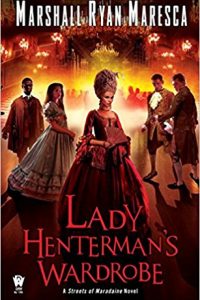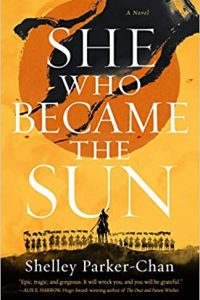Paul Di Filippo reviews Hughes, Aylett, Rucker & Sterling
Brutal Pantomimes, by Rhys Hughes (Egaeus Press 978-0-957160699, $39, 256pp) February 2016
Heart of the Original, by Steve Aylett (Random House UK 978-1783520916, $16.95, 112pp) April 2016
Transreal Cyberpunk, by Rudy Rucker and Bruce Sterling (Transreal Books 978-1940948140, $15.95, 310pp November 2015
Nowadays, much of the most exciting work in the literature of fantastika appears from the small or independent presses, and from self-publishing ventures that are funded either loans with no credit check on a solo basis or communally. Publishers like Tachyon, Word Horde, WordFire, Small Beer, Prime, Wildside, Underland, Aqueduct and many others promote new voices and, along with more traditional tales, a fair amount of experimentalism. Platforms like Kickstarter and Patreon allow individual visionaries to craft their volumes to taste. Quite often, books produced this way are works of art in presentation, unlike their merely serviceable mass-market cousins. And with some frequency, writers who will become mainstays of the genre and award ballots emerge here first.
Today we look at three volumes from some well-known authors who have chosen the small-press route as their current path. To my eye, all three books would have merited adoption by the Big Five publishers, if only the motives and goals of the Big Five had been just a little more broad-minded.
* * *
 The irrepressible Rhys Hughes is approaching his eight-hundredth published story, well on his way to his stated goal of writing one thousand tales. Not quite as many short publications as folks like Silverberg and earlier pulpsters produced, but pretty damn impressive nonetheless. He recently issued an ebook titled The Million Word Storybook, which is exactly what it purports to be: one million words of his fiction. Oh, yes, it comes in “Male” and “Female” editions as well, as justified by a slight variance in contents between them. So approaching his new hardcover, Brutal Pantomimes, which Egaeus Press has rendered as a beautiful objet d’art, we expect big vistas of fiery-eyed creativity—and are not disappointed.
The irrepressible Rhys Hughes is approaching his eight-hundredth published story, well on his way to his stated goal of writing one thousand tales. Not quite as many short publications as folks like Silverberg and earlier pulpsters produced, but pretty damn impressive nonetheless. He recently issued an ebook titled The Million Word Storybook, which is exactly what it purports to be: one million words of his fiction. Oh, yes, it comes in “Male” and “Female” editions as well, as justified by a slight variance in contents between them. So approaching his new hardcover, Brutal Pantomimes, which Egaeus Press has rendered as a beautiful objet d’art, we expect big vistas of fiery-eyed creativity—and are not disappointed.
Only three out of the ten stories in this collection have previously seen print, so even the hardcore fans of Hughes’s work will be in for a treat.
Hughes’s prose is always poetic and evocative without being baroque or lapidary. “A man lay next to him, curled up tight, blinking and mumbling as if his tongue was draped with cobwebs which dissolved slowly until his words came free and clear.” The assurance of his voice, as he conducts the reader through his labyrinths of fable, is always astonishing. And his startling turns of phrase keep the reader on his or her toes. “It landed on the grass with a sickening and slightly sad squelch, as if a squonk had been stomped by a clumsy centaur…” Whether presented in the first person or otherwise, his narratives are seductive and dreamlike, with the plots moving in organic, unpredictable fashion. His finished tales resemble strange flora and fauna more than they resemble clockworks or statues, as so many other fictions do. His natural consorts are folks like Borges and Aickman, Leena Krohn and Zoran Živković, Lafferty and Bayley, Kafka and Lem.
Here are just a few of the incredible conceits Hughes generously disburses. In “The Jam of Hypnos,” a man is gifted with one strange talent: whenever he dreams of edibles, those edibles will materialize. A silly premise? Then how does Hughes manage to make a suspenseful life-or-death adventure out of it? “The Private Pirates Club” is like a Dunsany Jorkens tale on LSD, as members of a select group try to outdo each other with anecdotes of terror on the high seas. Captain Marlow Nothing accidentally drives his wheeled boat from the sea deep inland, only to become “shipwrecked” and involved with an unlikely pneumatic building in “The Inflatable Stadium.” “The Knees of Kionga” finds an entire African village undertaking a journey a la Baba Yaga’s walking hut en masse to Portugal, in a satirical manner that Swift might have been proud to conceive. Finally, the closing story, “The Impossible Inferno,” manages to blend Avram Davidson with James Blaylock as it recounts the investigations of Professor Mouse into the tropical yeti of Haiti, and their incursions into the unprotected British homeland.
As Michael Cisco says more elegantly in his fine introduction to this collection, Rhys Hughes possesses an imagination and story-telling verve which is as natural and miraculous as breathing or the circulation of the blood. We are all extremely lucky that he does not hide his talents away like some saintly wilderness hermit, but instead shares them like Buddha in the marketplace.
* * *
 Steve Aylett, I suspect, would enjoy, or does enjoy, the fiction of Rhys Hughes. I make this reasonable deduction based on Aylett’s new book, Heart of the Original, which is the first non-fiction issuance from the nonpareil surreal master of the Beerlight saga and other splendid contrivances. This book is a brawling meditation on “originality, creativity and individuality,” to quote its subtitle, a take-no-prisoners slugfest between Aylett and every lazy hack, commodified unit-shifter and cynical paper-waster who has ever soiled the hem of the Muses’s gowns with their obscene effusions. Much of Aylett’s attention is turned towards literature, as we shall see, but his thesis also involves societal customs, mores and the fate of nations. This an aphorism-filled, pungent, house-of-horrors ride through human nature. If you picture Bradbury’s Zen and the Art of Writing mated with Allen Ginsberg’s Howl, or some mad collaboration between Robert Anton Wilson, Terence McKenna and Ralph Waldo Emerson, you’ll have a good idea of what Aylett has achieved.
Steve Aylett, I suspect, would enjoy, or does enjoy, the fiction of Rhys Hughes. I make this reasonable deduction based on Aylett’s new book, Heart of the Original, which is the first non-fiction issuance from the nonpareil surreal master of the Beerlight saga and other splendid contrivances. This book is a brawling meditation on “originality, creativity and individuality,” to quote its subtitle, a take-no-prisoners slugfest between Aylett and every lazy hack, commodified unit-shifter and cynical paper-waster who has ever soiled the hem of the Muses’s gowns with their obscene effusions. Much of Aylett’s attention is turned towards literature, as we shall see, but his thesis also involves societal customs, mores and the fate of nations. This an aphorism-filled, pungent, house-of-horrors ride through human nature. If you picture Bradbury’s Zen and the Art of Writing mated with Allen Ginsberg’s Howl, or some mad collaboration between Robert Anton Wilson, Terence McKenna and Ralph Waldo Emerson, you’ll have a good idea of what Aylett has achieved.
In twelve ultra-compressed chapters, Aylett seeks to distinguish what makes a life or a work of art truly authentic. He dissects all the traps of conformity and staleness that the human mind is prone to, unless it is pushed or pushes itself out of its ruts. But the amazing thing is that Aylett does not merely preach, he literally embodies his thesis, for the book itself is written in accordance with its own precepts. Its language demands to be quoted in nearly every sentence, and I’ll have to give just a couple of examples. “Real creativity is a ferocity of consciousness. It can be as small as the firestarter spark produced by those two words that have never been next to each other before or as stomach-rolling as translating yourself sideways into adjacent dimensions….” “Before the fractures of continental drift, Earth held a single land mass shaped like a giant ultrasound of the creepiest baby in the galaxy.” And so forth, redoubled and redoubled again.
Like Lovecraft in his monograph Supernatural Horror in Literature, Aylett gives a taxonomy of what he admires. For instance, his tracing of themes from After London through Day of the Triffids to The Drowned World provides high insights.
Ultimately, Aylett has produced a “self-help” book if you will, the kind of inspirational text that any writer or reader or sheerly existential, in-search-of-enlightenment soul will return to again and again for a necessary cosmic kick in the pants.
* * *
 One writer whom Aylett explicitly praises is Rudy Rucker, allowing us to segue straight to Rucker’s newest book, the collected collaborations between him and Bruce Sterling, Transreal Cyberpunk, a title which yokes the two separate essential strengths of these complementary writers. On Rucker’s part, hot gonzo autobiography; on Sterling’s part, cool conceptual audacity. Although of course, each man plays deftly in both arenas. These nine stories have all had high-profile appearances, in Asimov’s magazine and at Tor dot Com, but now you get them in their impressive cumulative force, along with generous slabs of ancillary material.
One writer whom Aylett explicitly praises is Rudy Rucker, allowing us to segue straight to Rucker’s newest book, the collected collaborations between him and Bruce Sterling, Transreal Cyberpunk, a title which yokes the two separate essential strengths of these complementary writers. On Rucker’s part, hot gonzo autobiography; on Sterling’s part, cool conceptual audacity. Although of course, each man plays deftly in both arenas. These nine stories have all had high-profile appearances, in Asimov’s magazine and at Tor dot Com, but now you get them in their impressive cumulative force, along with generous slabs of ancillary material.
Appearing over the span of thirty years, with the final contribution, “Kraken and Sage,” being original to this volume, these stories embody the essence of hip, cutting-edge modern SF. Alternate history, genetic engineering, cosmic armageddons of several sorts, entrepreneurial paradigm shifts—wherever SF goes, Rucker and Sterling have been there and left their mark. The level of story-telling excitement, juicy language and ideational mind-blowingness is extremely high here. The two authors play fast, slick and deep.
But perhaps of most interest in this collection are the authorial notes which detail the nuts and bolts of the co-writing experience, and which also muse on exactly what it means to be two working SF writers in this strange day and age, attempting to chart new territory side by side. The personal and cultural aspects of the three-decade-long Lewis and Clark expedition made by these two men, which they generously share with us, is perhaps the most affecting meta-tale of the whole project, and well deserving of your attention.





